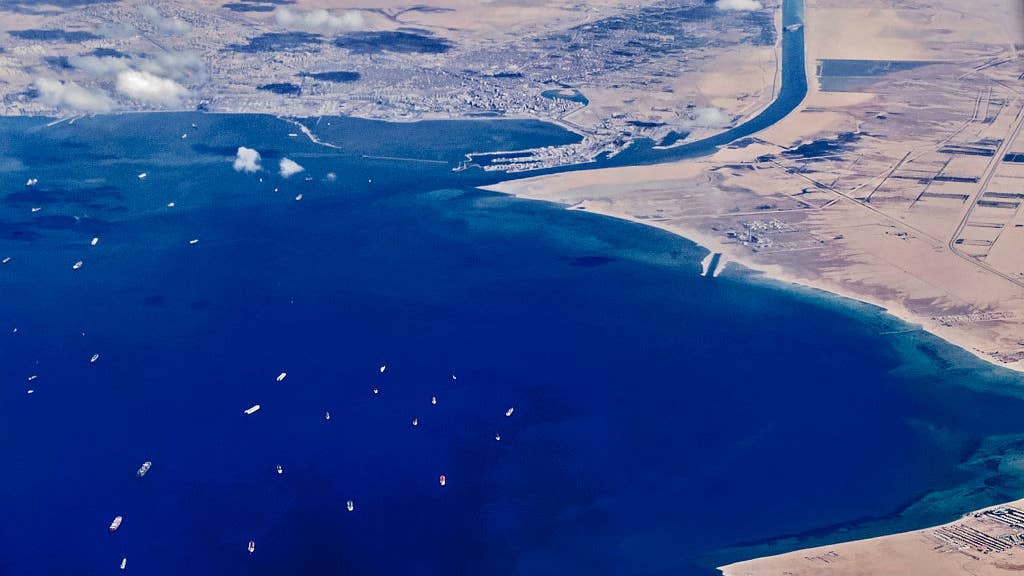The US wanted to use hundreds of nukes to create an alternative to the Suez Canal

Photo by Mahmoud KHALED / AFP) (Photo by MAHMOUD KHALED/AFP via Getty Images)
SUMMARY
Israel’s early days were pretty tough. It was the youngest kid in a rough neighborhood and endured endless bullying from its Arab neighbors. After fighting for its independence in 1948, it would face wars for its survival in 1967 and 1973, and nearly launched the world into World War III in 1953. Times were, needless to say, pretty hard. The Suez Canal was one of the keys to Israel’s survival in those early days.
Since its construction in the late 1800s, it’s been a vital strategic waterway, providing the shortest link between the Mediterranean Sea and Asia. In 1956, Egyptian President Gamal Nasser nationalized the canal and threatened to cut off Israel’s access to it.
Israel, with the support of Britain and France, even invaded the Sinai Peninsula in 1952, the event that almost drew in the United States and the Soviet Union. Thankfully, the Suez Crisis was resolved before a larger war could break out, but Israel still needed to ensure its access through the Suez and the Straits of Tiran.
Luckily, just a few years later, the United States happened to be looking for more ways to use atomic energy peacefully while informing the public about the true power and threat of nuclear weapons. Specifically, it was looking to demonstrate the usefulness of atomic explosions in building critical infrastructure projects.
A lot of methods were tested using nuclear explosions, including blasting rock, exploring the Earth’s crust, and developing new methods of mineral prospecting. In Israel specifically, scientists came up with a scheme that would create a new Suez-like canal, linking the Red Sea to the Mediterranean through Israel’s Negev Desert – some 160 miles – using 520 nuclear bombs.
The Cold War was certainly an insane time. A memorandum written in 1963 was declassified in 1996, revealing the plans to cut a path of (literal) destruction across Israel using hundreds of two-megaton bombs; the conventional methods of creating such a canal would be “prohibitively expensive,” according to the memo. "It appears that nuclear explosives could be profitably applied to this situation."
“Profitably applied,” in this case, means four nuclear devices for every mile of canal, noting that 130 miles of the 160-mile stretch were uninhabited at the time. The only problem for the canal was the “political feasibility, as it is likely that the Arab countries surrounding Israel would strongly object to the construction of such a canal." Not to mention how the Israelis in the 30 miles of populated canal zone might feel about their country being nuked.
Despite the good intentions of using “peaceful” nuclear explosions, numerous tests were conducted that found these explosions, however peaceful they might have been, heavily irradiated the areas in which they were tested.
Other projects considered for use of peaceful nuclear explosions included widening the Panama Canal, creating a new canal through Nicaragua (called the Pan-Atomic Canal), mining projects in Arizona, and water transportation systems in California. Serious consideration was given to creating a harbor in Cape Thompson, Alaska using hydrogen bombs. It was reconsidered after they discovered Cape Thompson didn’t actually need a harbor.
Dozens of tests were conducted over the course of more than a decade, including hundreds of underground tests, but nothing came of the effort, and the funding to use peaceful nuclear blasts for civilian purposes quietly dried up by 1977.
SHARE
